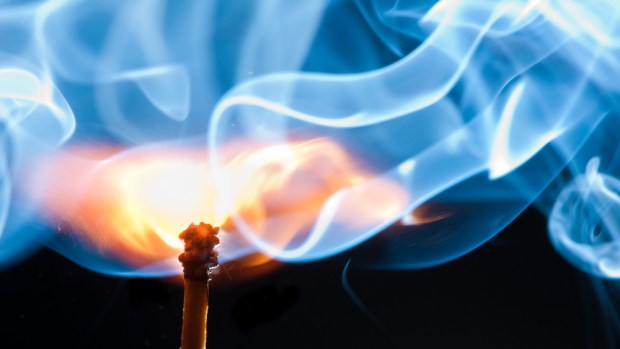Online Fraud Detection Sizzles, iPhone Shares Fizzle — And Some Upbeat Economic News

Sizzle
Online fraud falls — a LOT: Contrary to popular opinion — and perhaps contrary even to logic — the fraud fight has given a round to the good guys, even if the battle is far from over. Online fraud is down 34 percent, overall, at the end of Q1 2017 versus a year ago. That’s a good headline number, though some caution is still in the offing, with online malfeasance spiking even as the total comes down.
Cash still thrives: The hard stuff — you know, paper and coins — still lines the wallets of people worldwide, despite some efforts to the contrary from governments.
Take India and Asia, where the Global Cash Index analysis of that region shows that spending with tangible currency will grow by 7.5 percent annually through 2020, to top $8.1 trillion that year. Pretty sizzling for payment methods that have been around for millennia.
Eating by digital design: To thrive, you’ve got to feed the machine, they say. But how about when the machine feeds you? In the future, your waiter may be programed to receive. At the National Restaurant Show late last month, discussion revolved around the advent of the digital restaurant, where there’s no seating and no waiting — and no guilt over tipping — as drones might flip the burgers and roll sushi, and possibly even tell you the right pinot noir to impress your date.
Fizzle
iPhone: Competition from China is ever looming for the iPhone, and the tech juggernaut’s market share dipped to 13.7 percent in the first quarter of this year, down from 14.8 percent a year ago. The market share just recorded trails behind Samsung, with more than 20 percent. The competition from China comes on price, as firms from the mainland also offer high-end technology. And the stock keeps marching, which leads one to ask how long these opposing trends can continue.
Auto loans: Auto loan delinquencies are on the upswing, especially for subprime borrowers. Is it any wonder then that the $1.2 trillion auto loan market is less savory for big banks? Car loan activity was off by $1.6 billion in the first quarter to $440 billion, as measured against the fourth quarter. Management at some banks have cited caution creeping in when it comes to lending. If used car prices keep falling, losses on loans may rise too.
U.K. insolvency spike: Cash flow or lack thereof catches up with firms across retail and construction, and Brexit makes things a bit more uncertain for firms in the U.K. The research firm Hudson Weir found that insolvencies were up 4.5 percent from the fourth quarter of 2016 to the first quarter of this year, totaling roughly 4,000 companies. Of that base, 16 percent were in construction and 13 percent in food and beverage.
Sizzle of the Week: The Economy
For mainstream news consumers, the last few months have not exactly been the most uplifting of times. No explanation needed.
But against that backdrop, a breath of pleasant fresh air blew into the week. No, not covfefe — though we would like to tip our hats to the thousands of Twitter users who apparently took a day off work to regale the world with their thoughts on that.
No, this week’s pleasant surprise came care of the economy: consumer spending is up, consumers are largely more confident than less and robust GDP growth is in the forecast.
Commerce Department numbers published earlier this week report that consumer spending picked up 0.4 percent in April, its fastest rate of growth since December 2016, while discretionary spending posted its fastest rate of growth over the last seven months. Consumer spending drives 70 percent of the U.S. economy, and April’s strong performance follows anemic results in early 2017 that slowed GDP growth to a measly 1.2 percent during Q1.
Durable goods lead categories that absorbed consumer dollars — with a 0.9 percent increase that was driven largely by resurgent automobile sales. Clothing notched a 0.6 percent increase, and spending on services such as utilities grew a moderate 0.3 percent.
The strong April results combined with upward revisions to March’s consumer spending data has economists estimating that consumer spending is running at around a 3 percent rate in Q2, up from its 0.6 percent pace in Q1. GDP growth estimates for the second quarter range between a rate of 2 percent and 3.8 percent.
The uptick in consumer spending is matched by an uptick in consumer wages. Personal income rose 0.4 percent last month; wages jumped 0.7 percent. Savings remained largely flat at $759.1 billion.
The labor market also continues to look strong — with the unemployment rate at 4.4 percent, the Conference Board labor differential posting its second strongest reading since 2001. The labor differential measures workers opinions on how hard jobs are hard to get and how plentiful jobs are perceived to be.
The lights were not quite all green this week, however. Consumer spending is up, but consumer confidence did dip some according to the Conference Board’s measure. March 2017 saw that index actually reach a 16-year high, and though April fell short of that metric, it is still north of where it was on the eve of the election six months ago.
So, everything’s coming up roses? Not quite. We’re sure the latest mainstream breaking newsflash will rapidly disprove that hypothesis.
But there are worse ways to go into a season where the weather is sizzling than with a labor market and economy that are sizzling right along with it.
